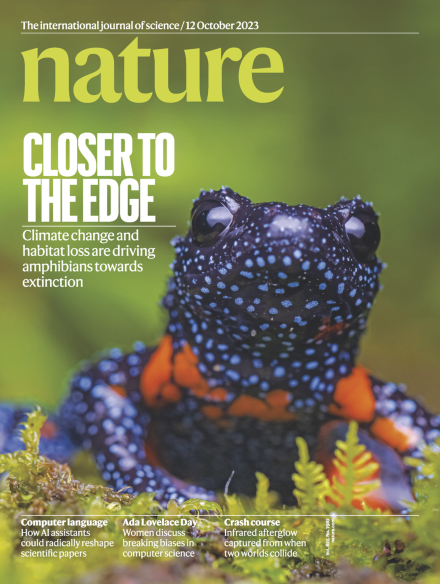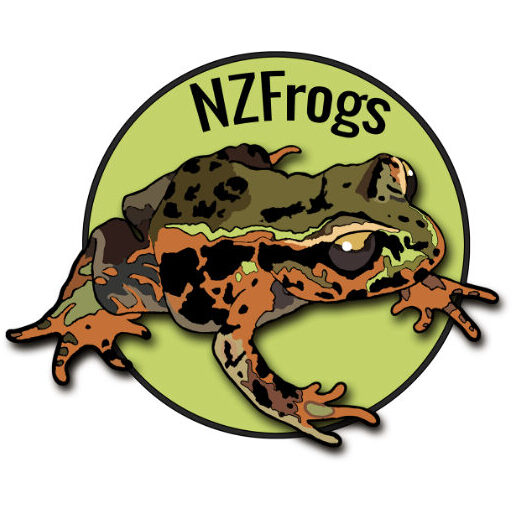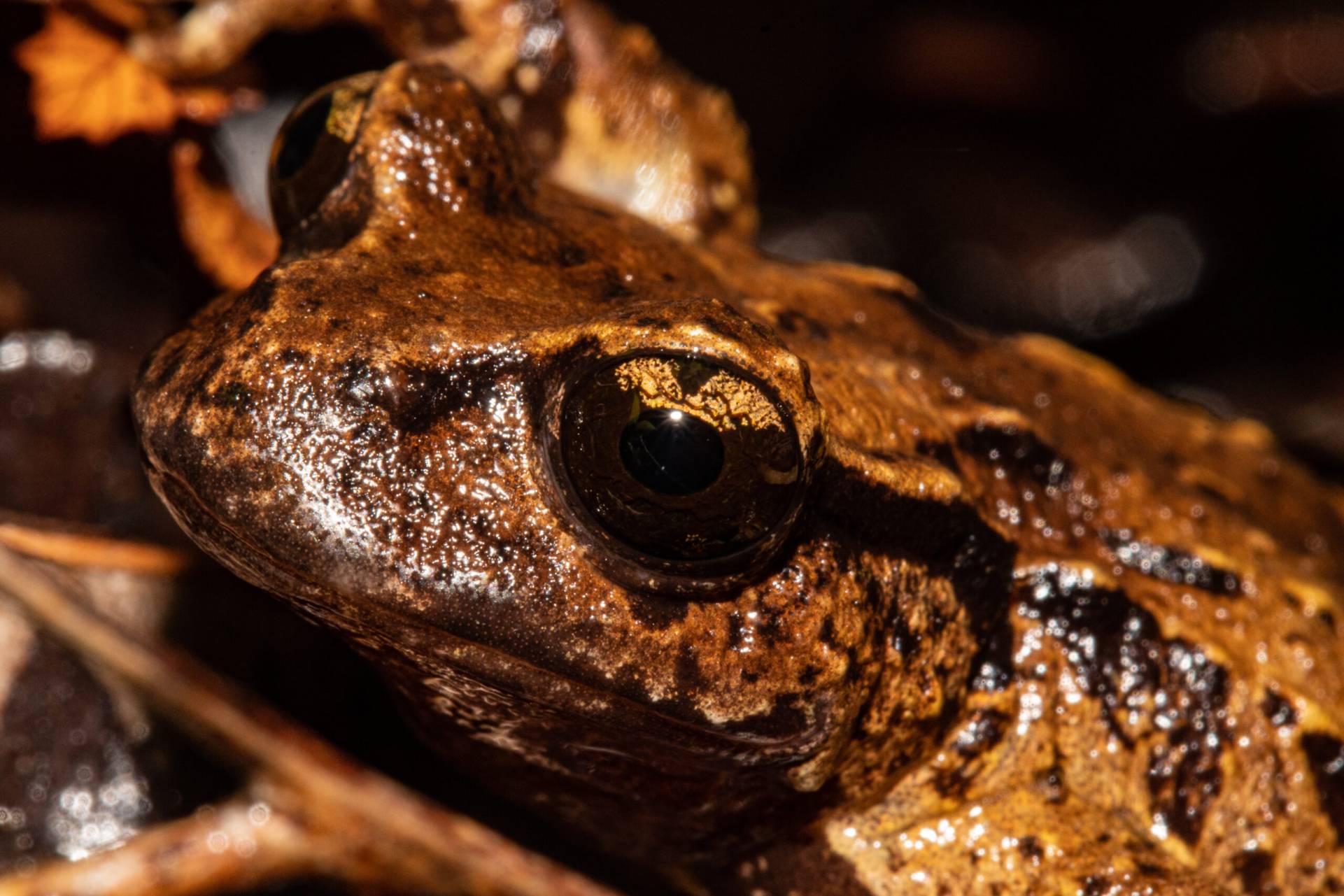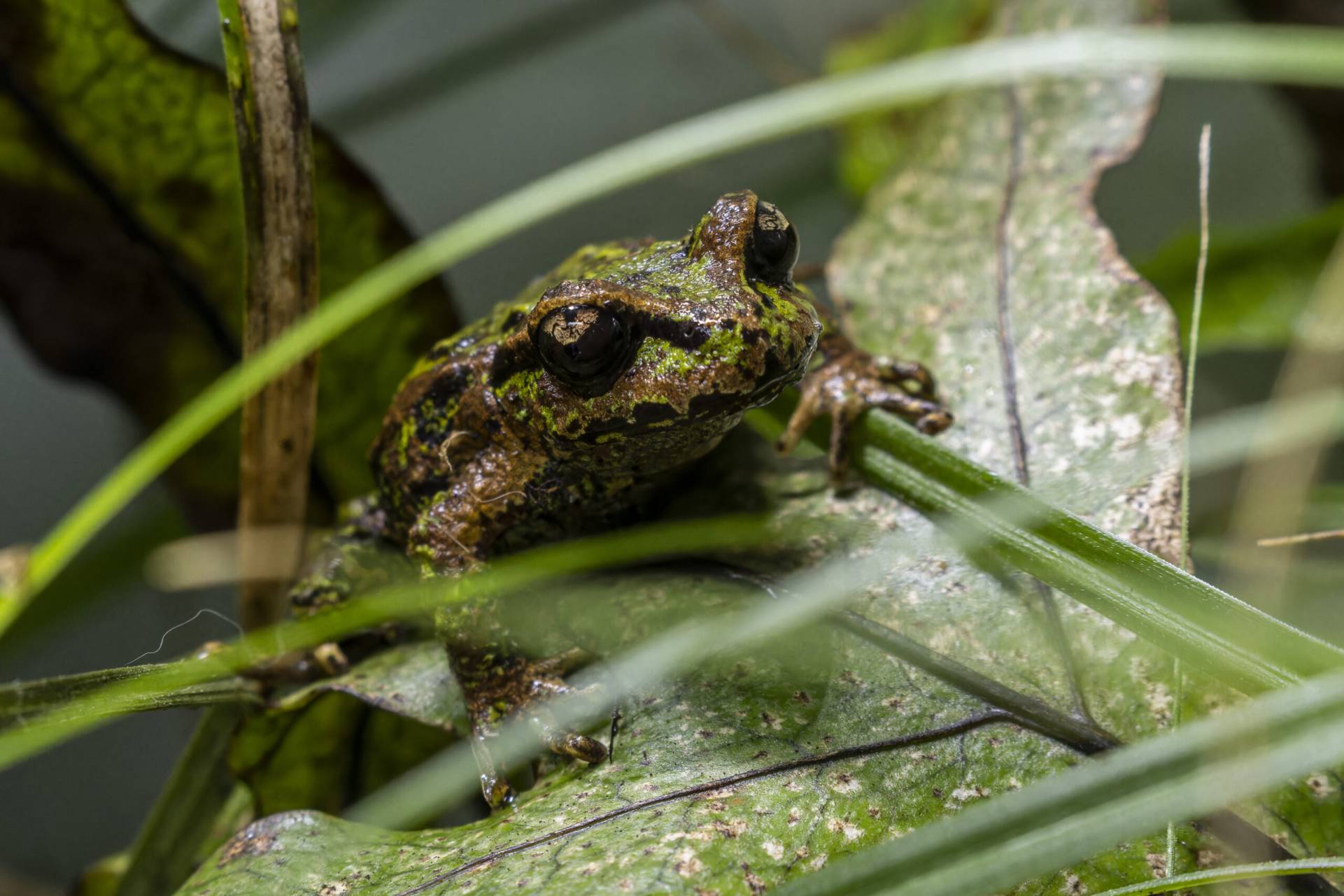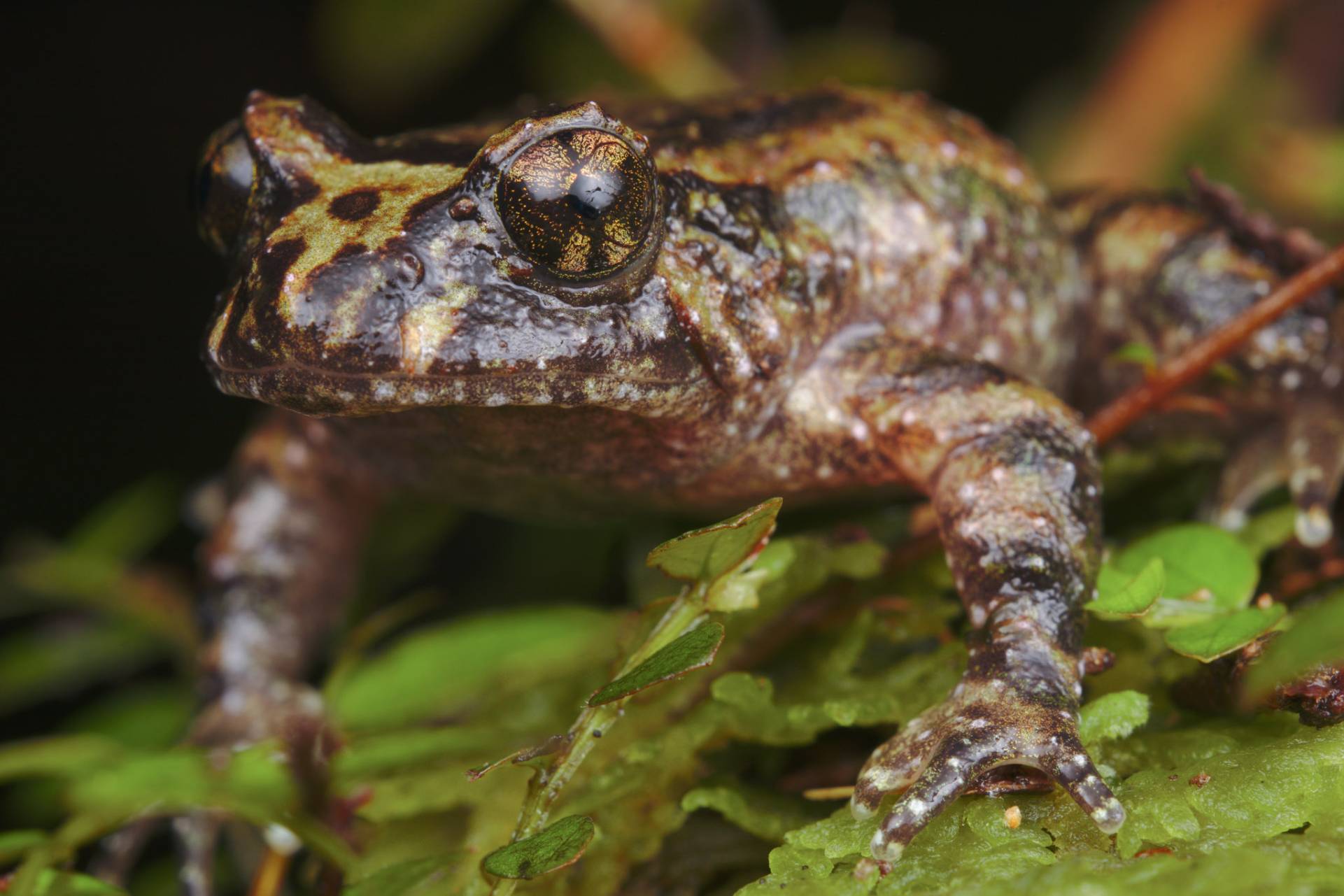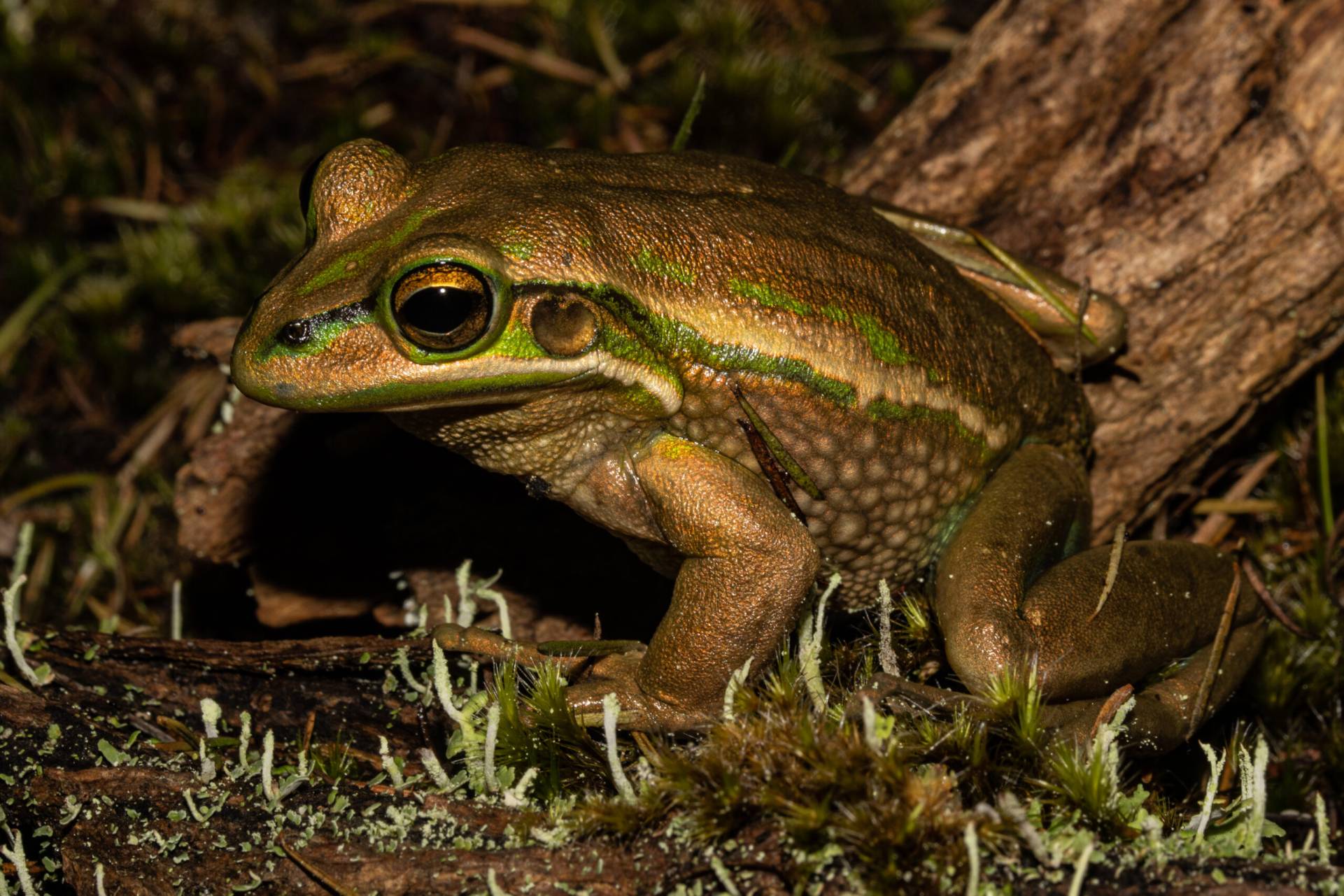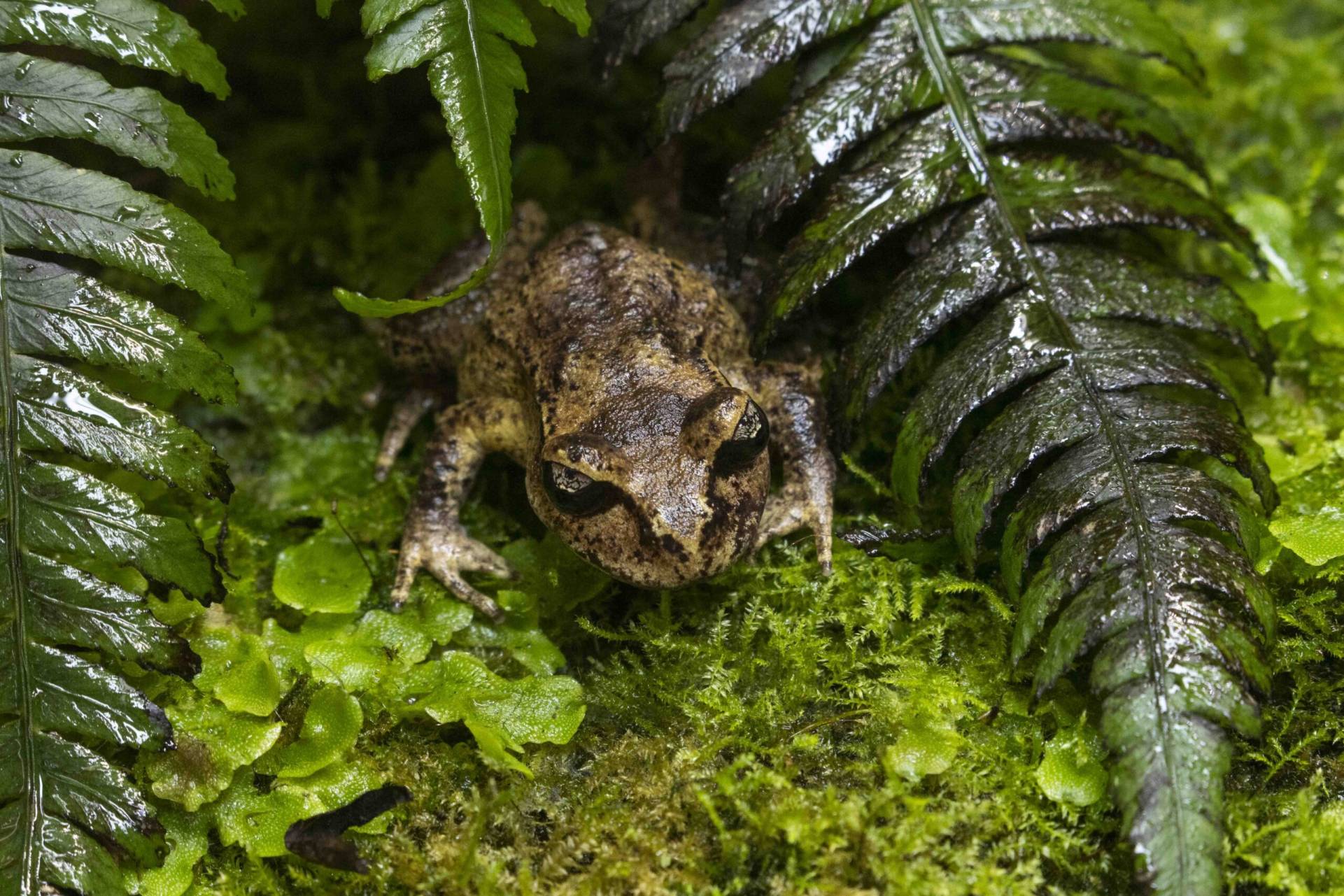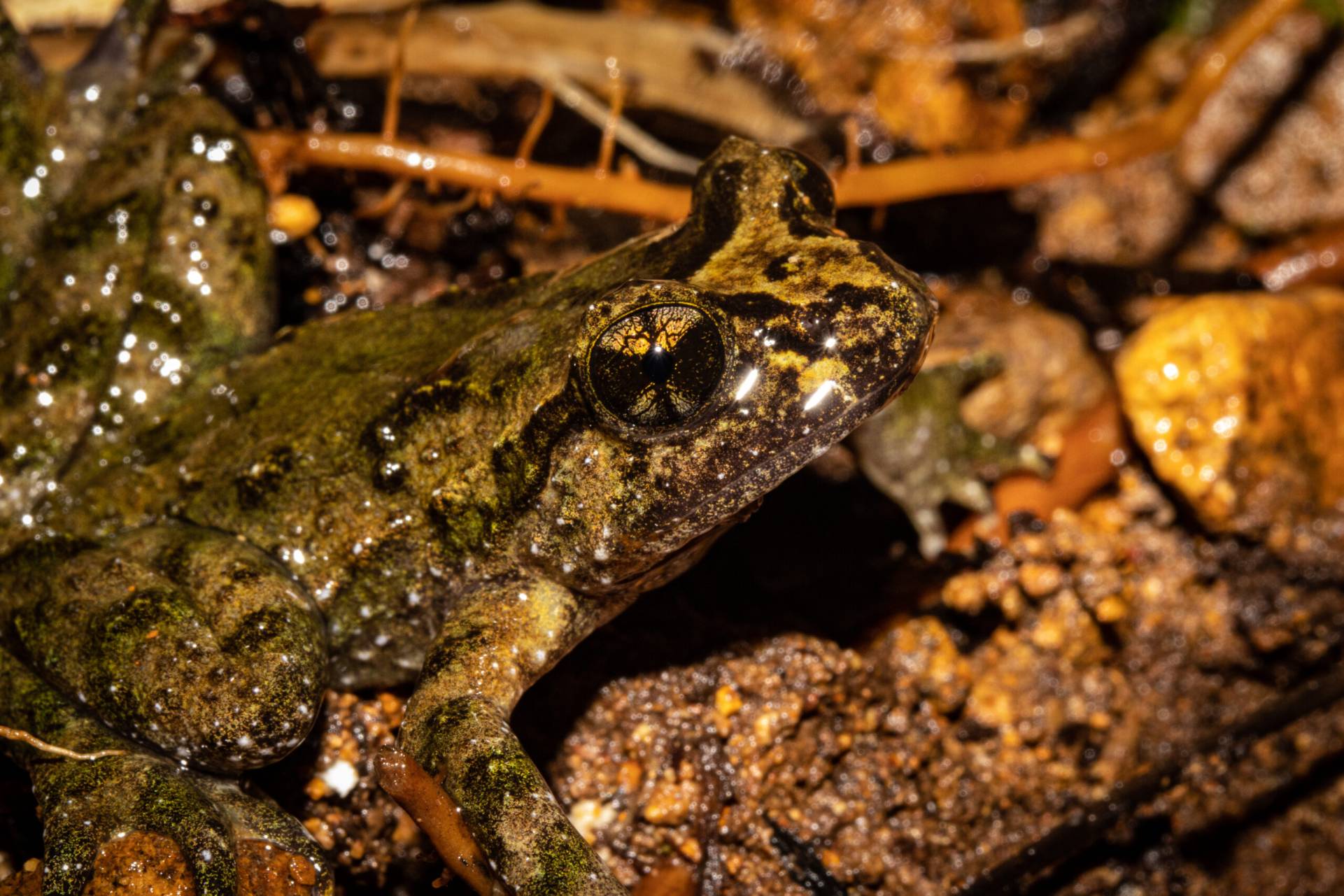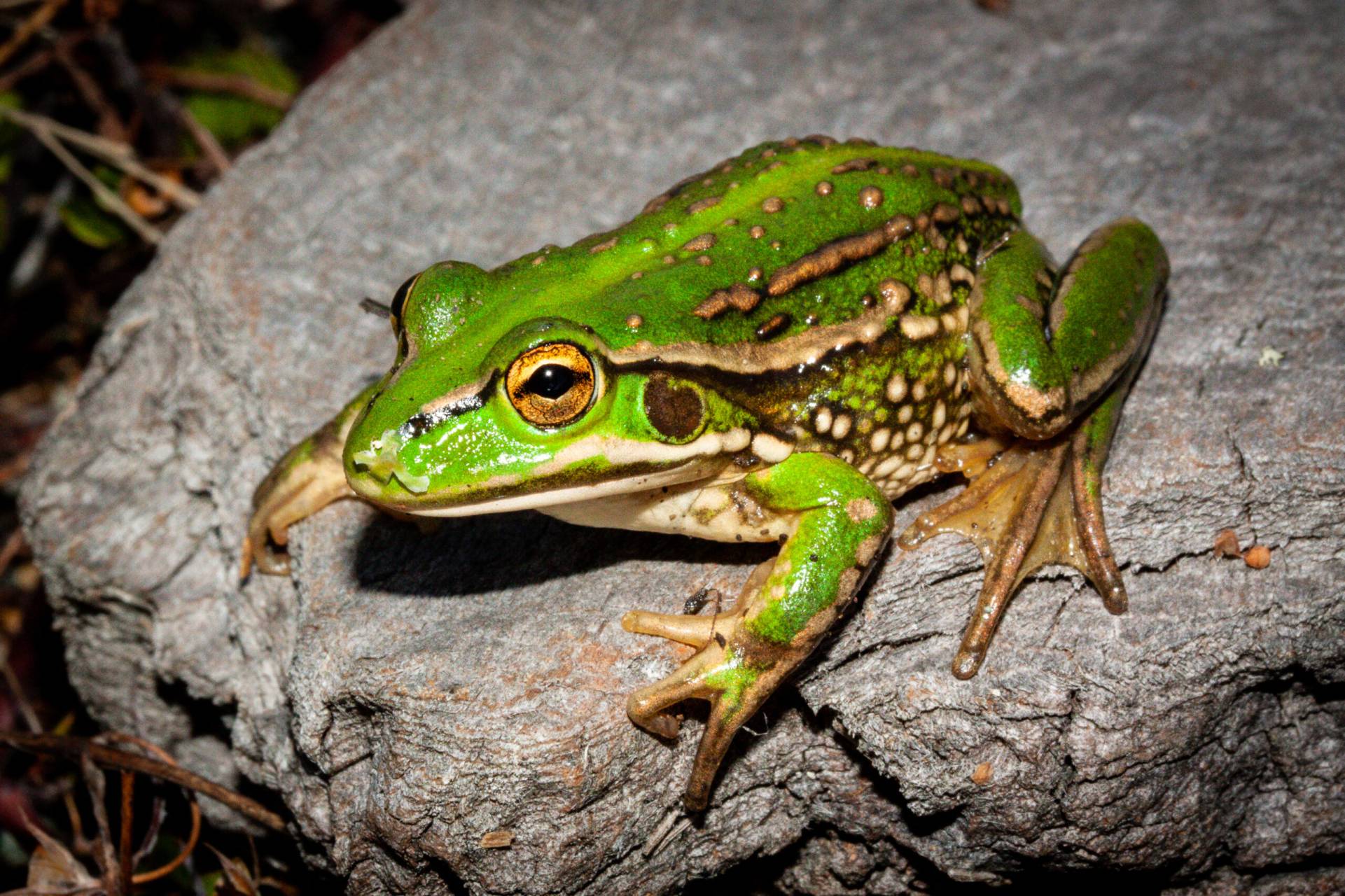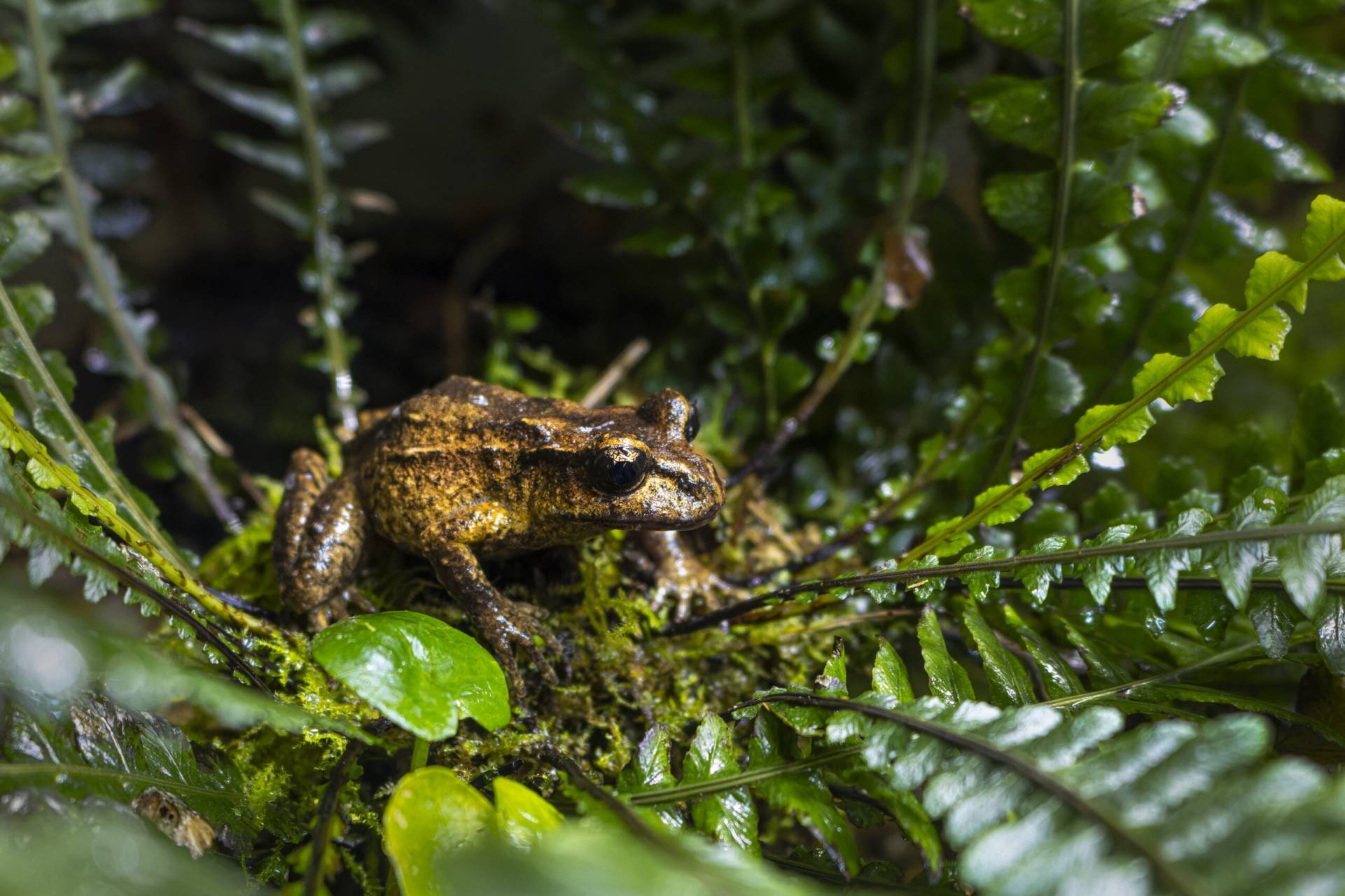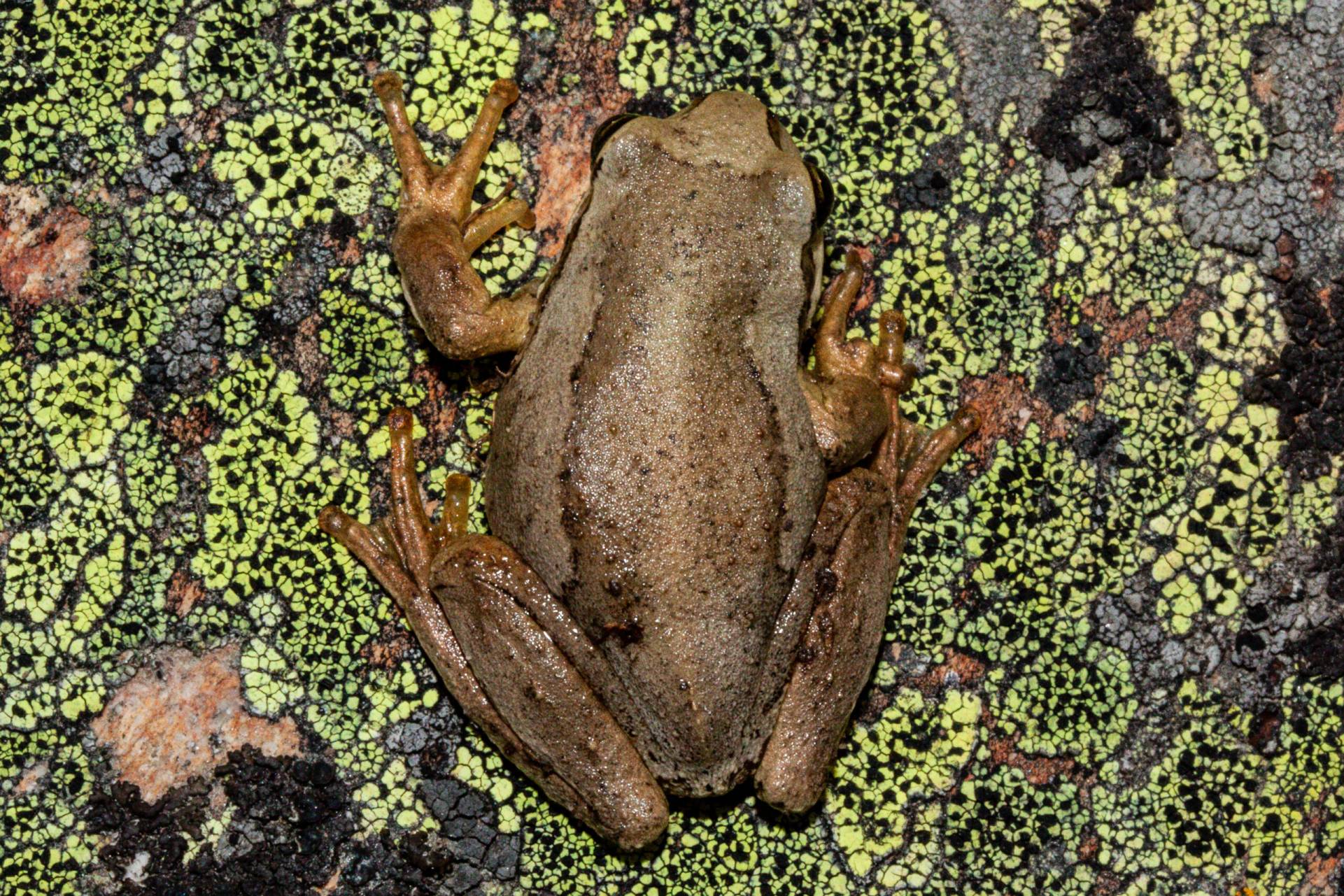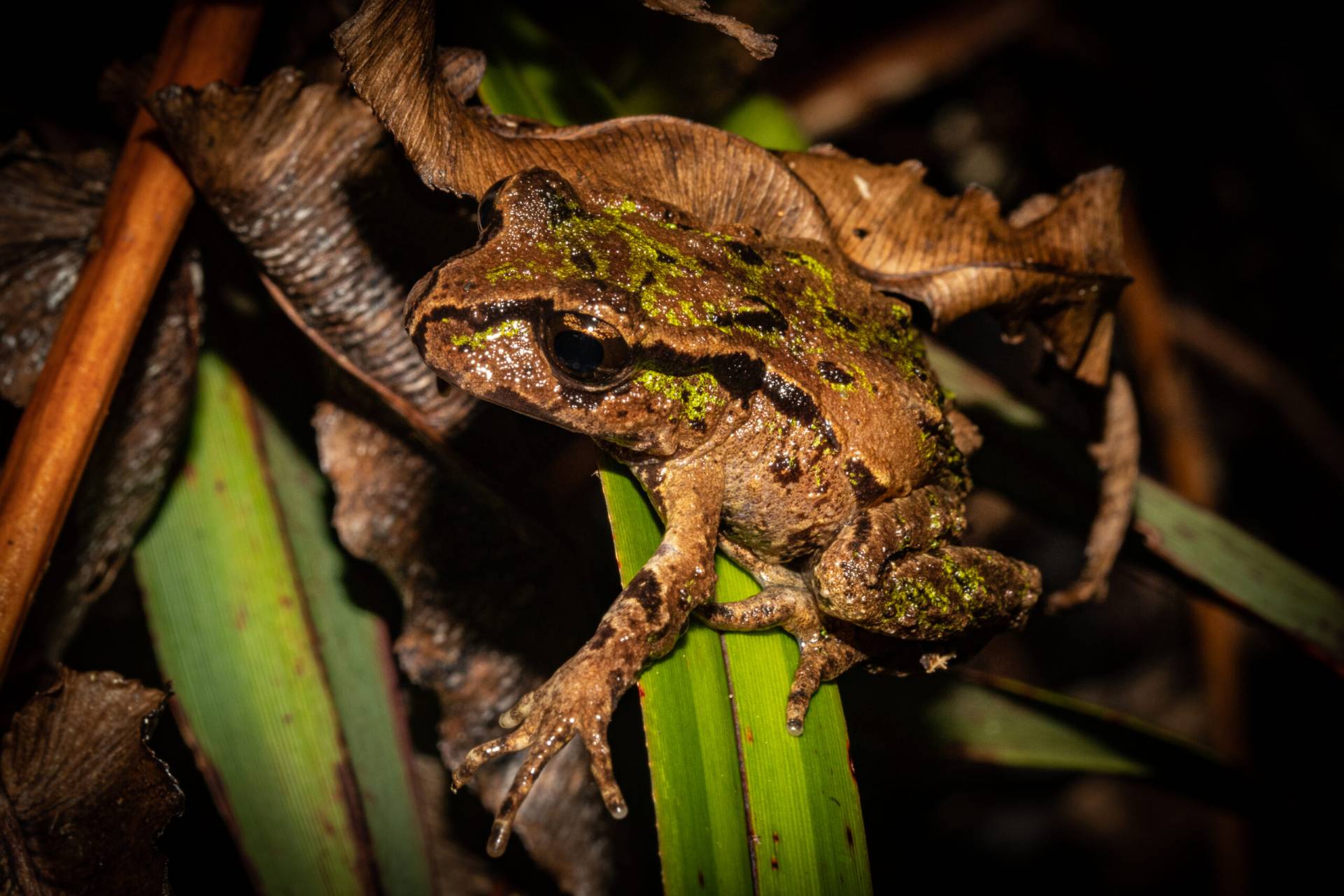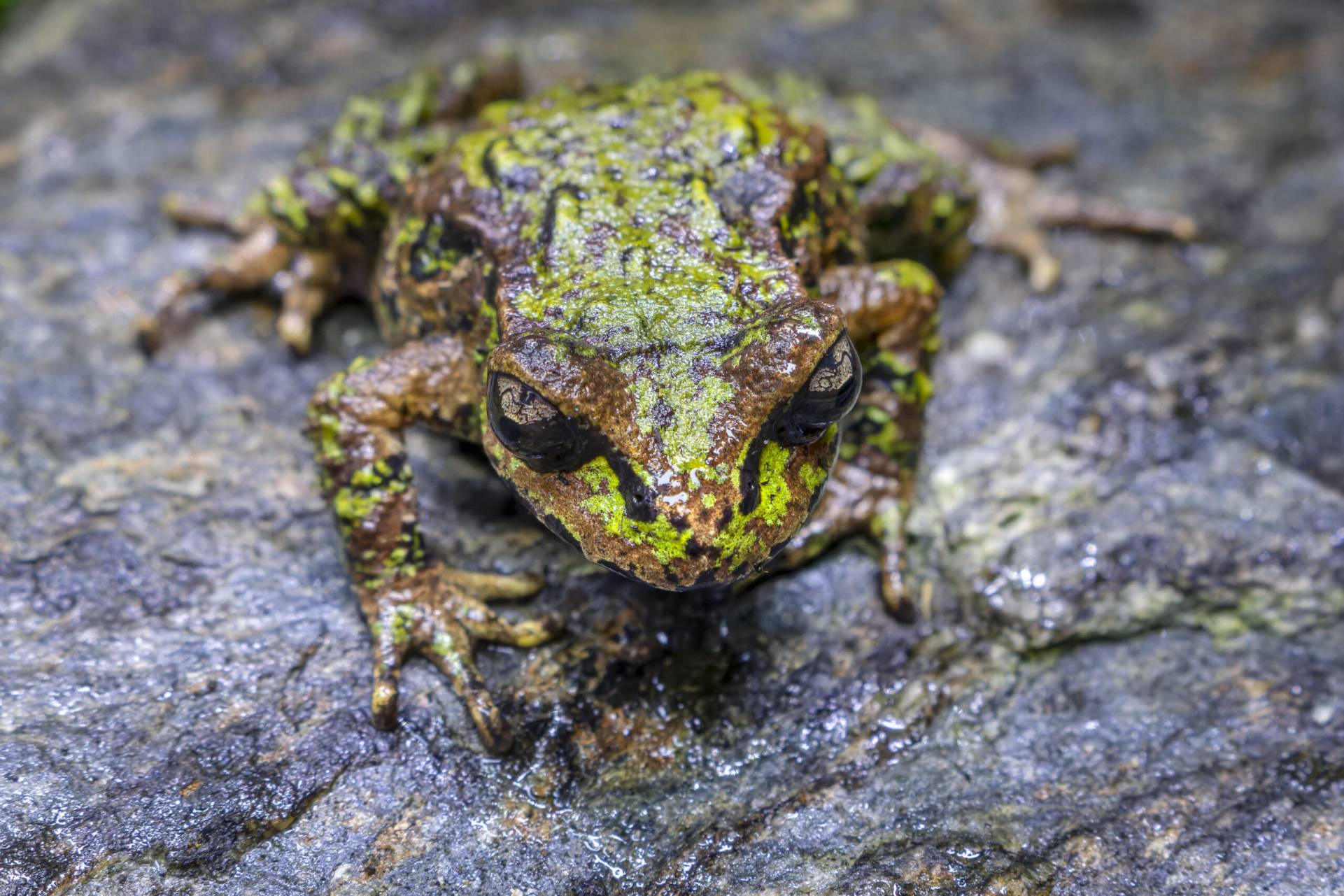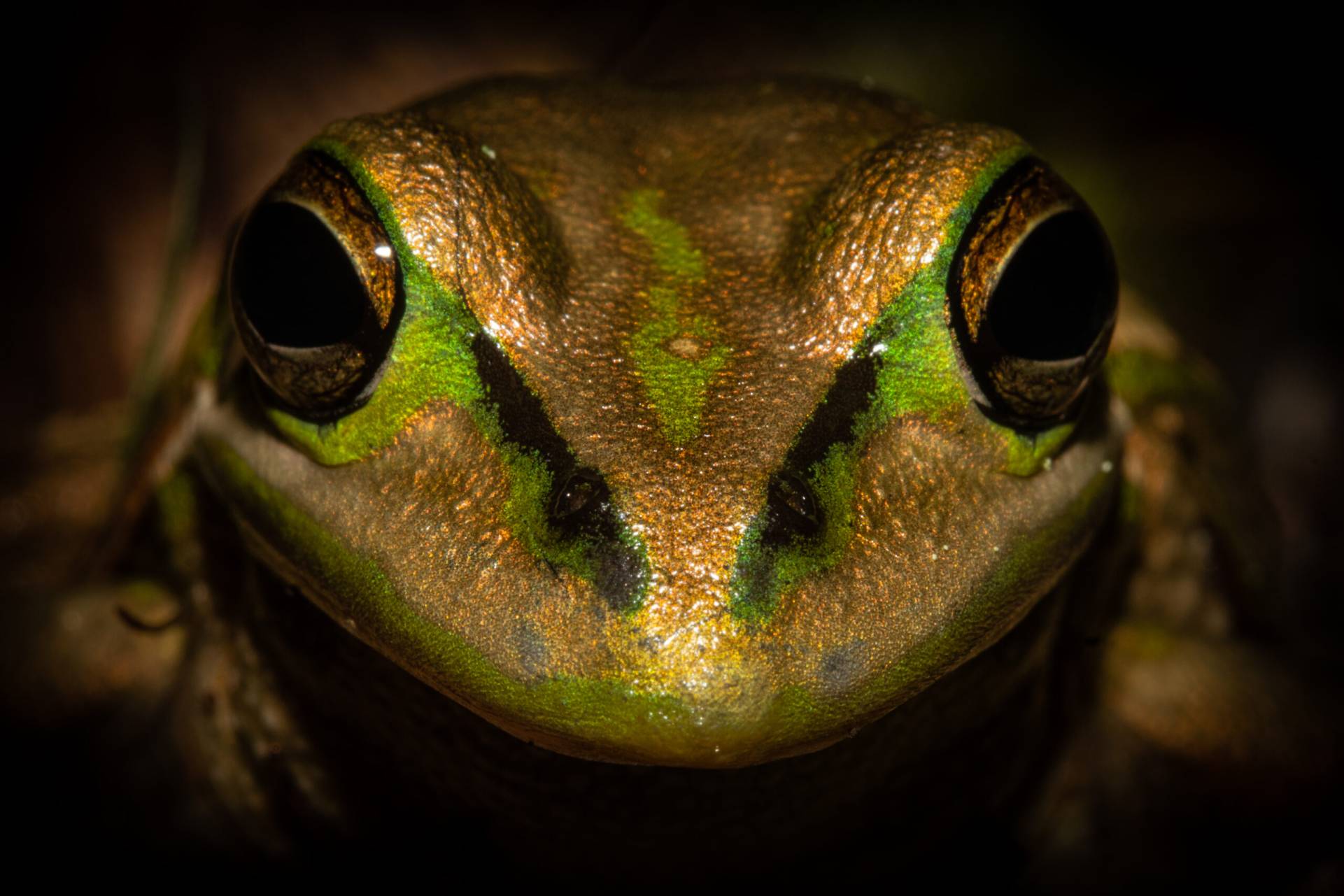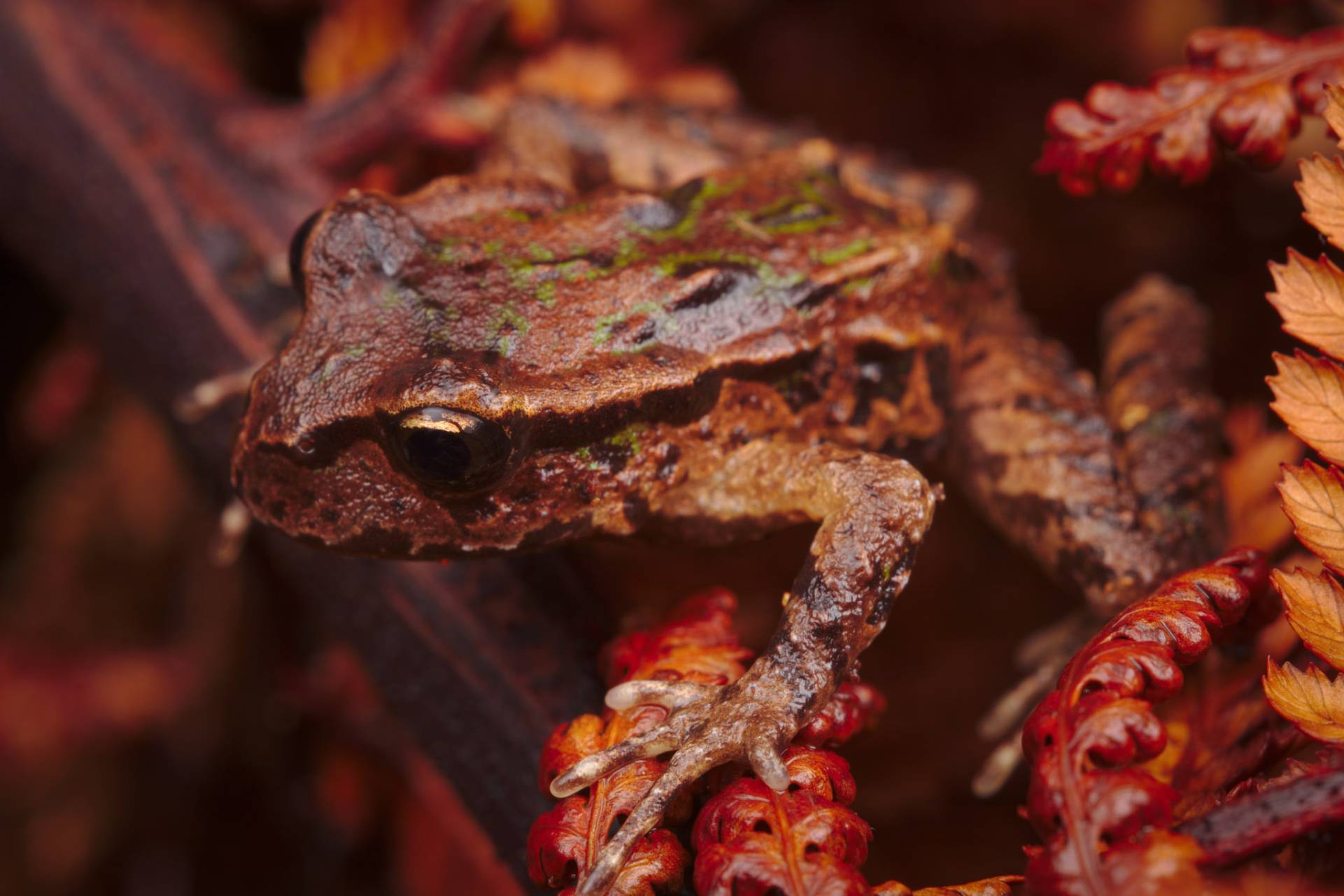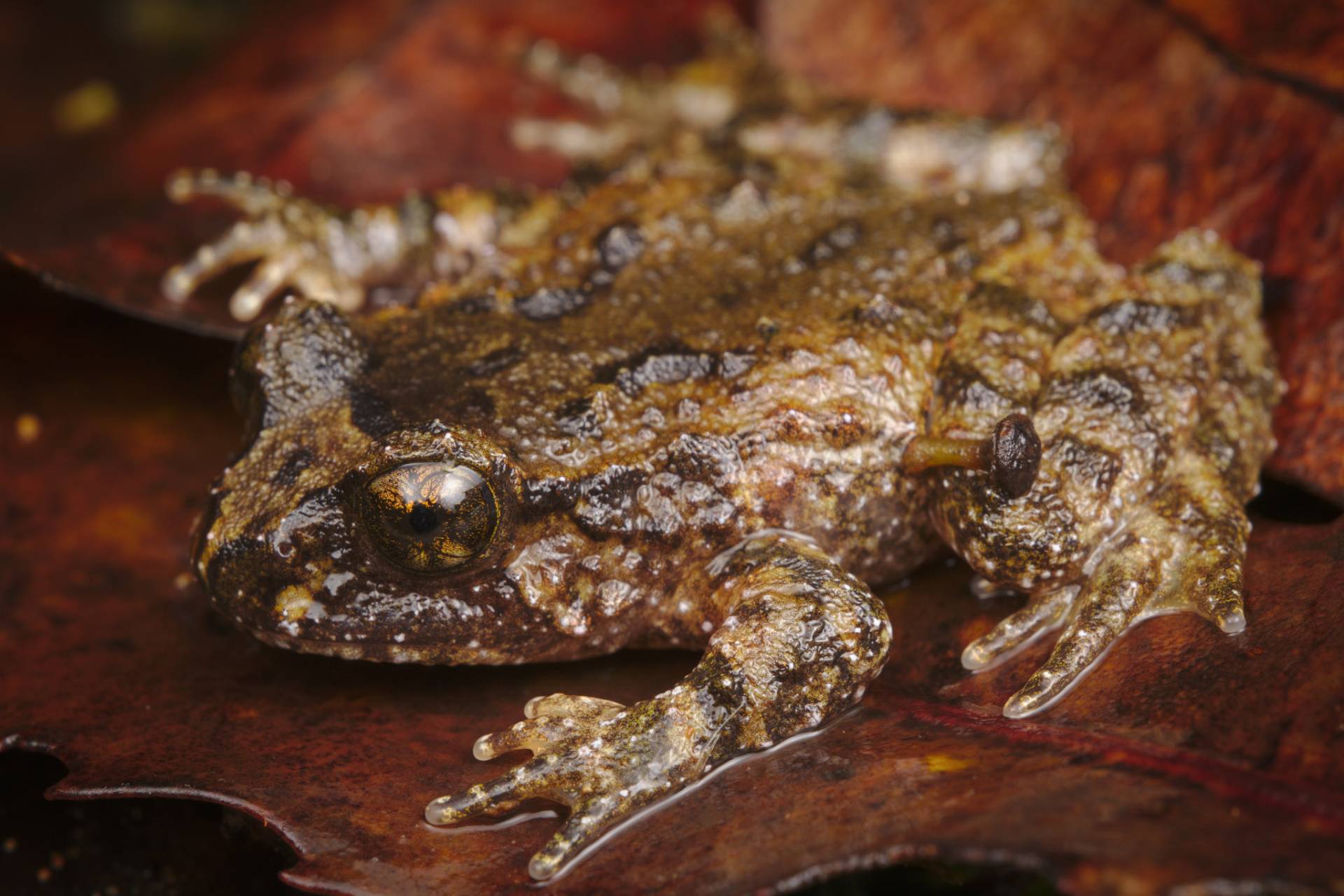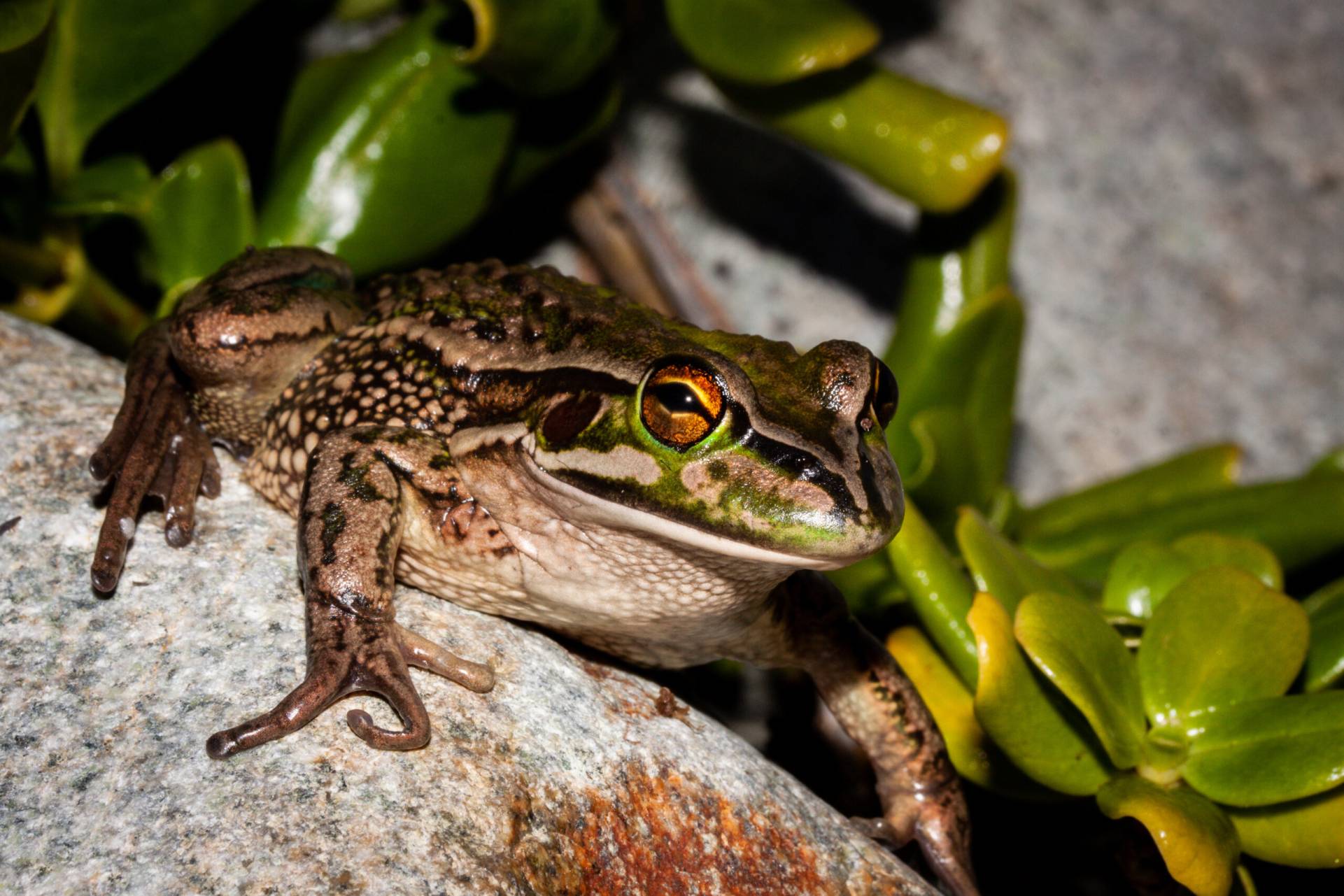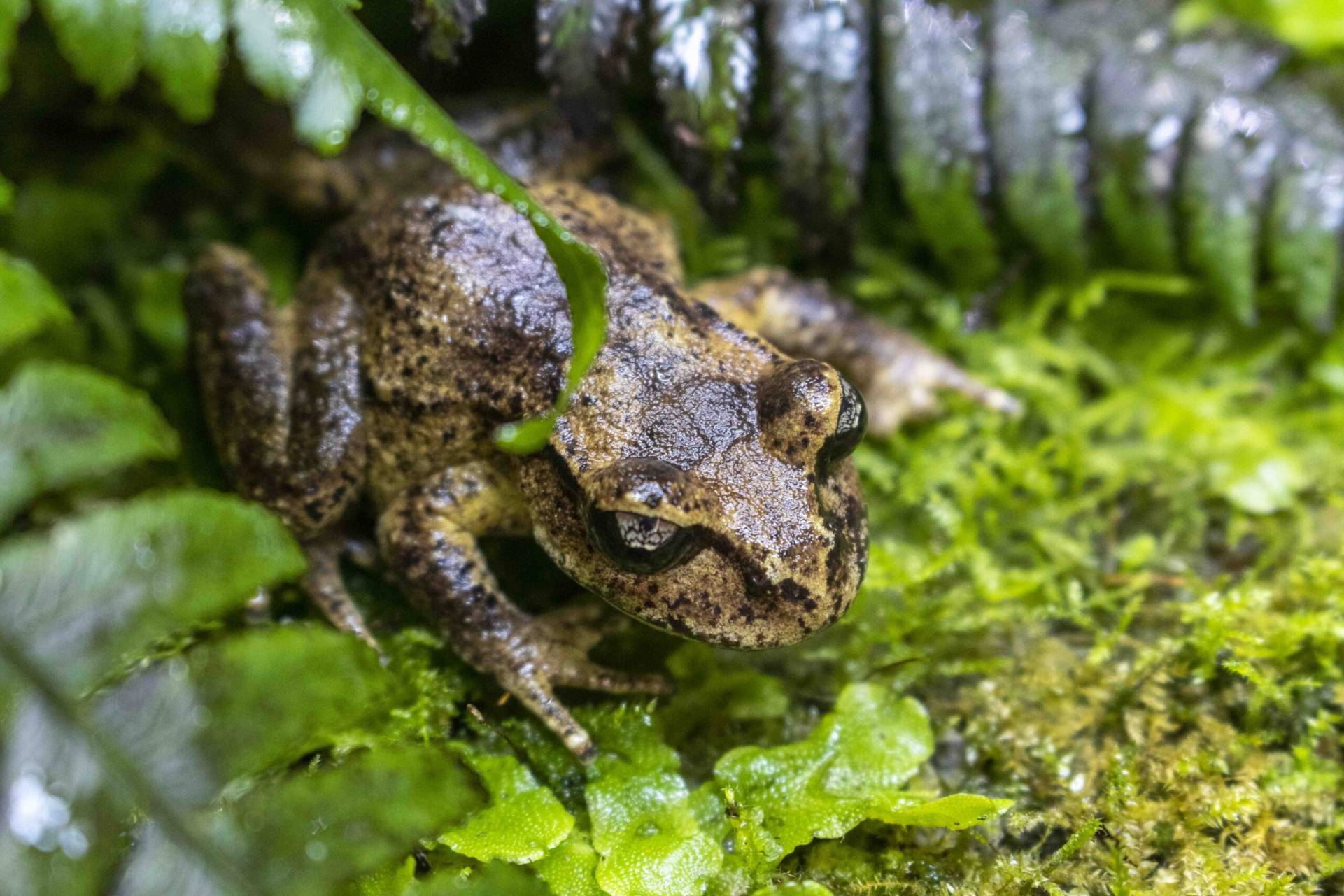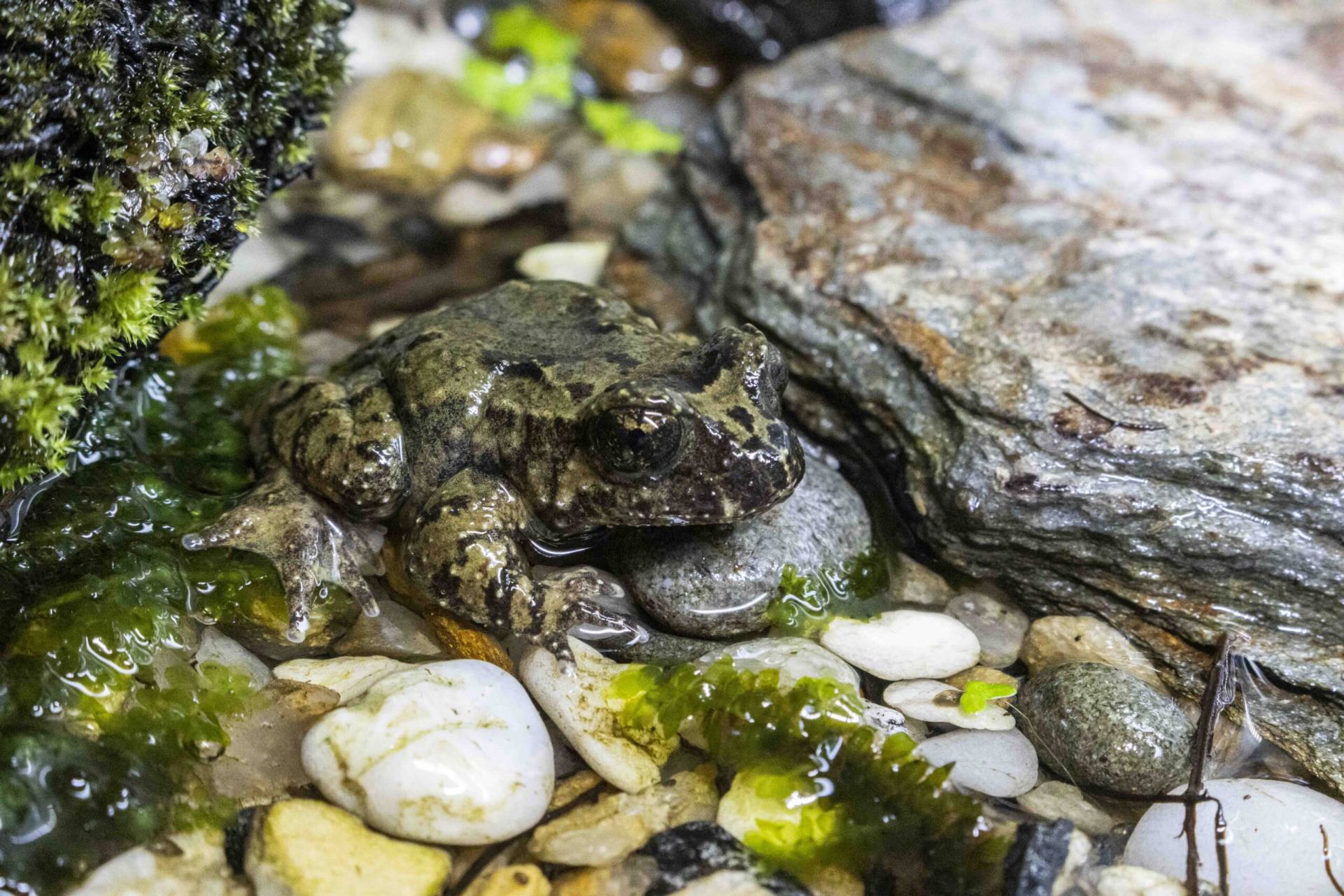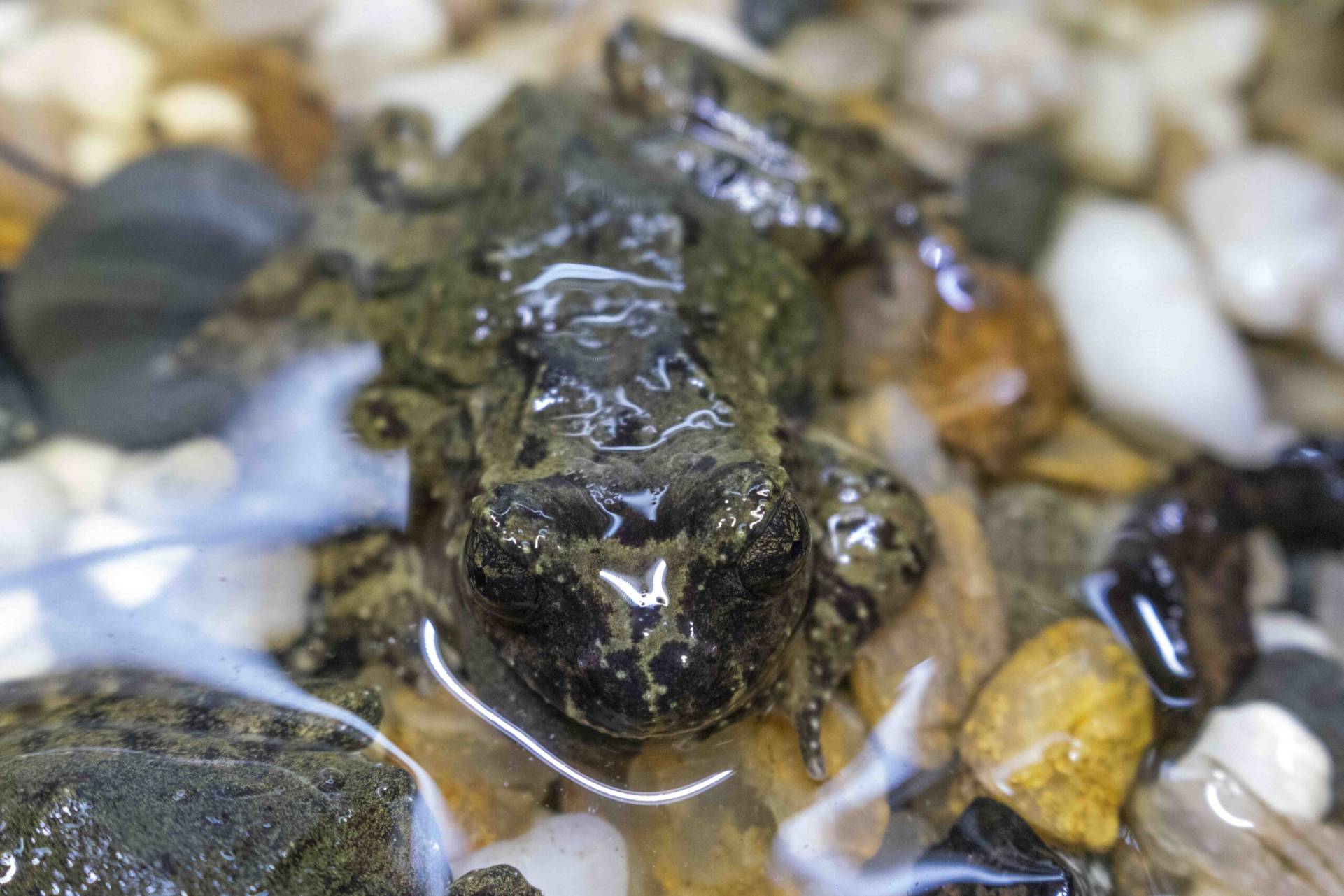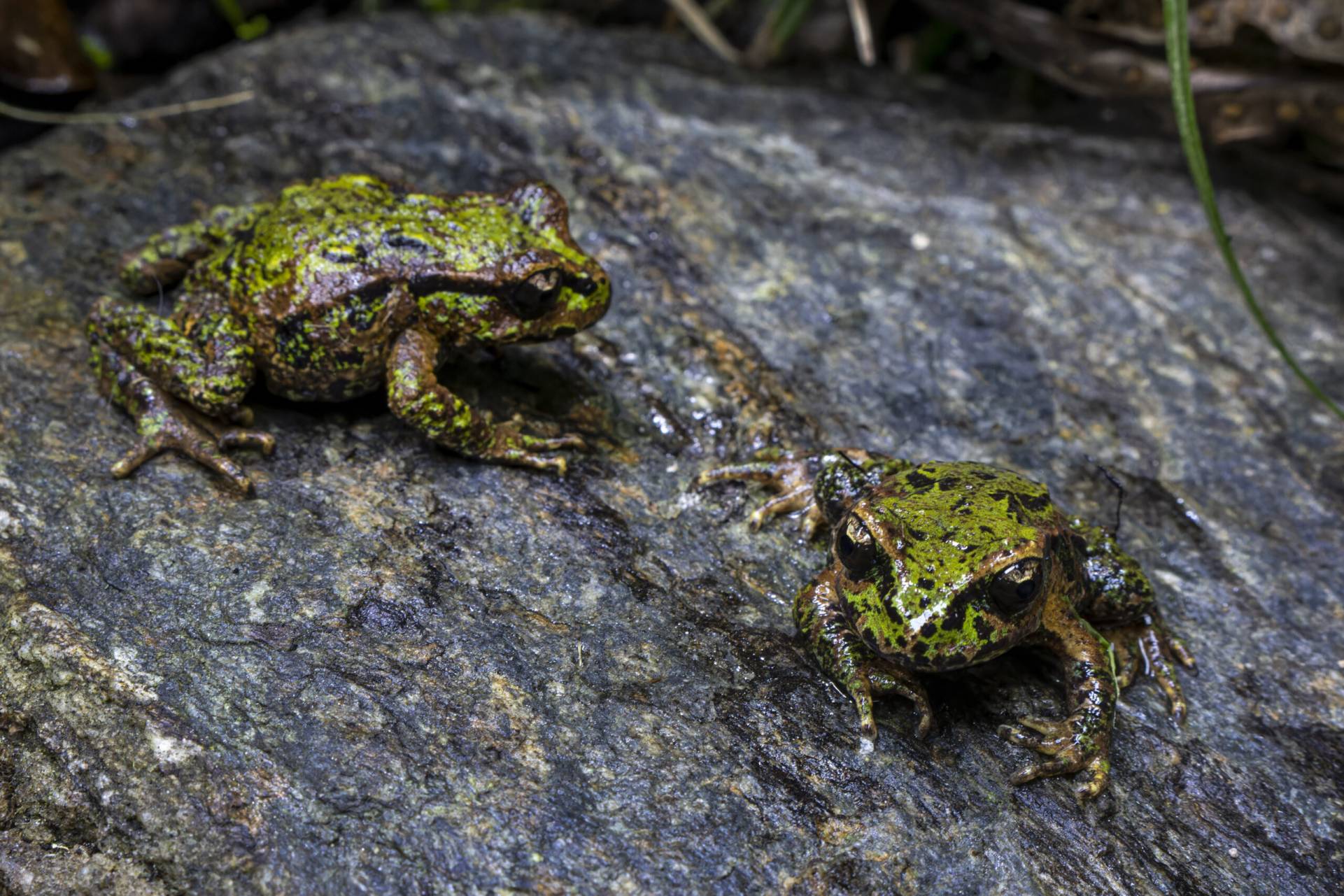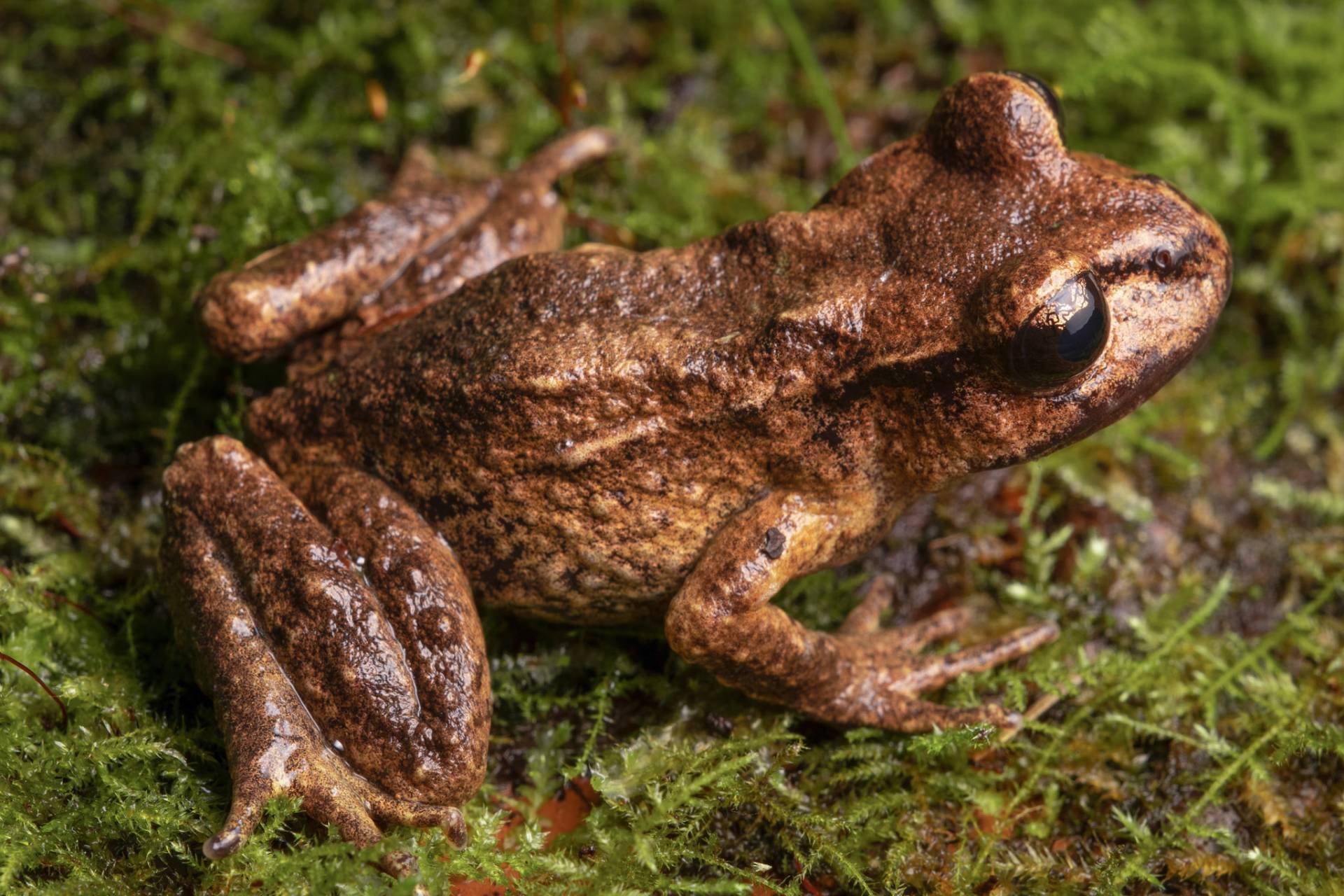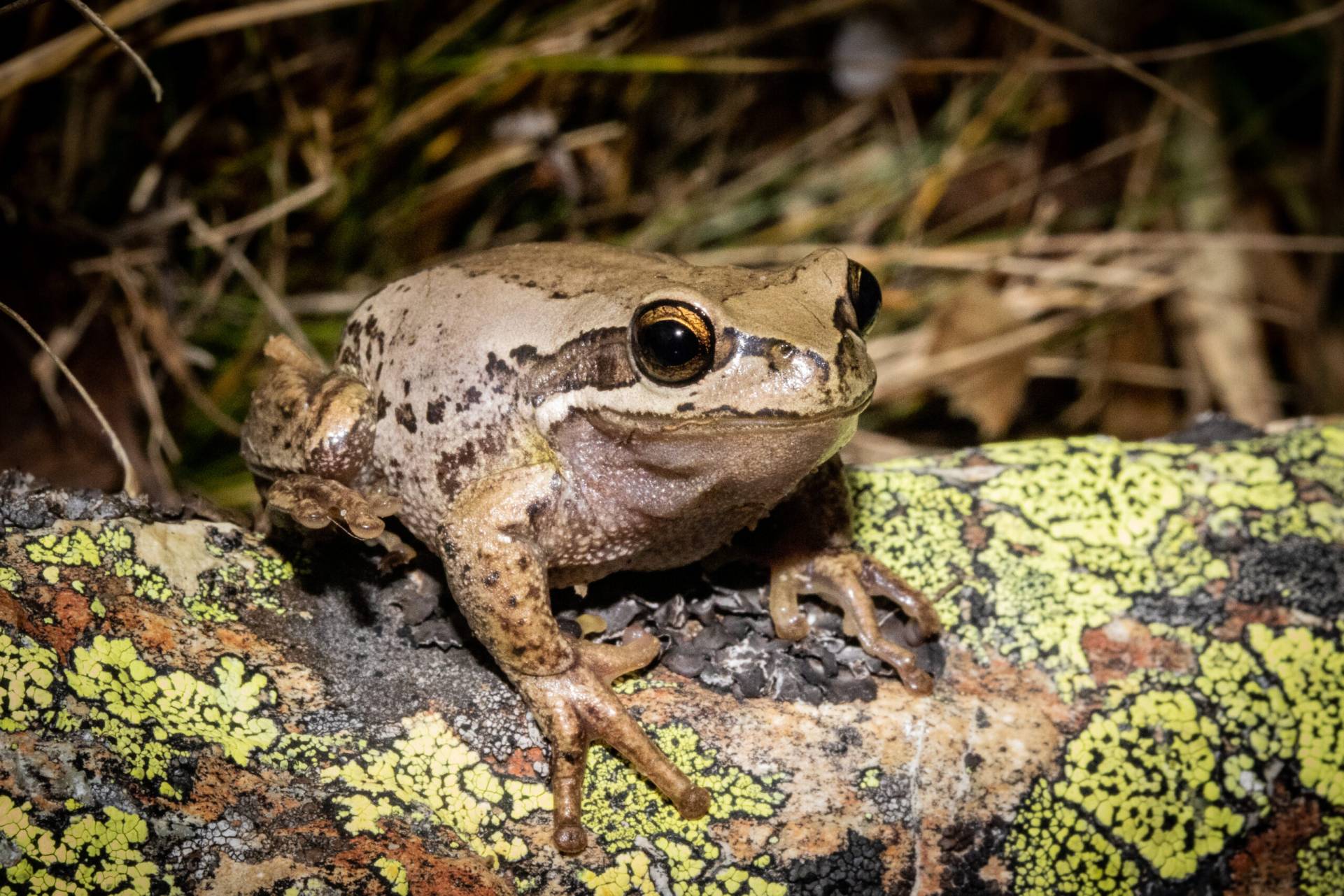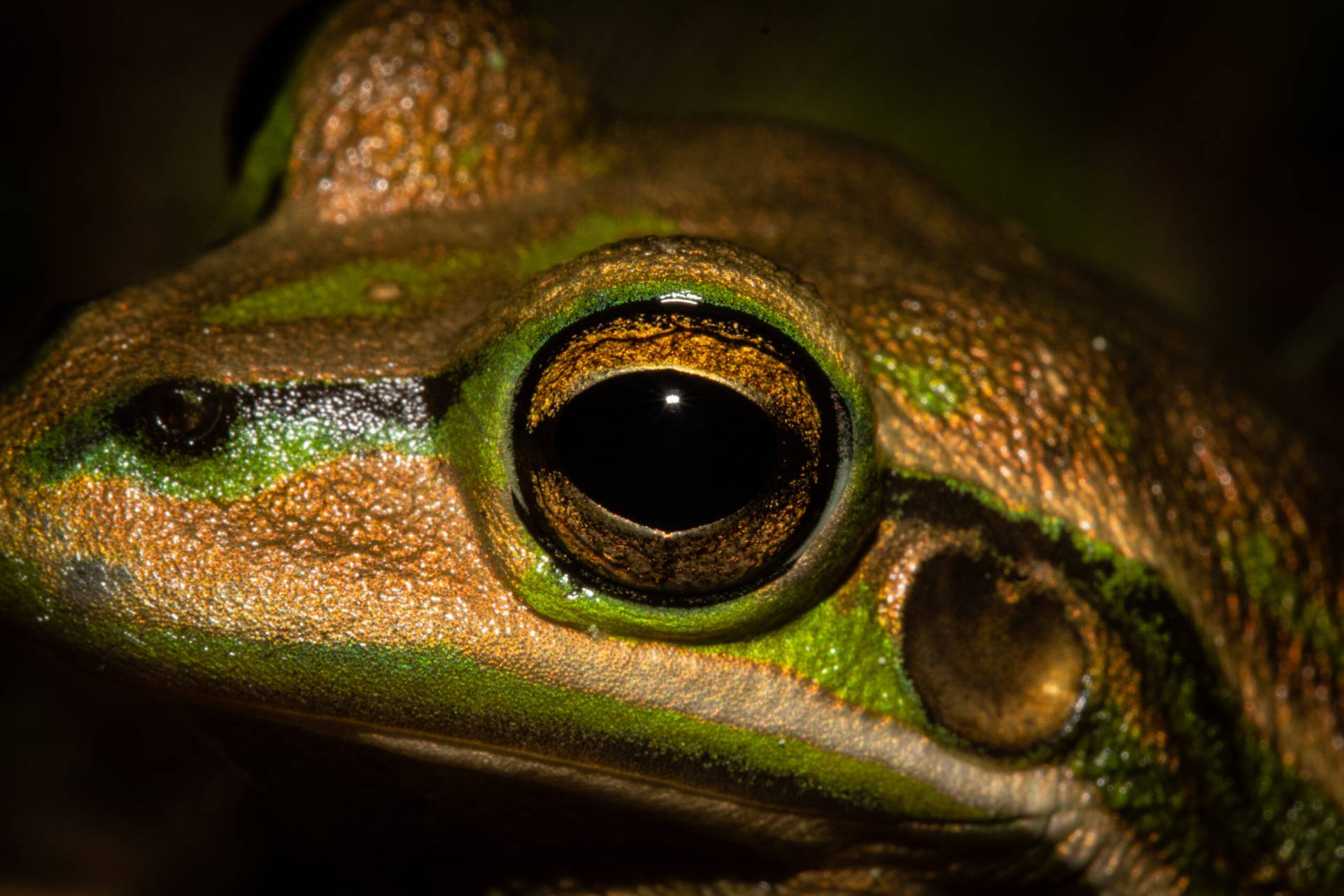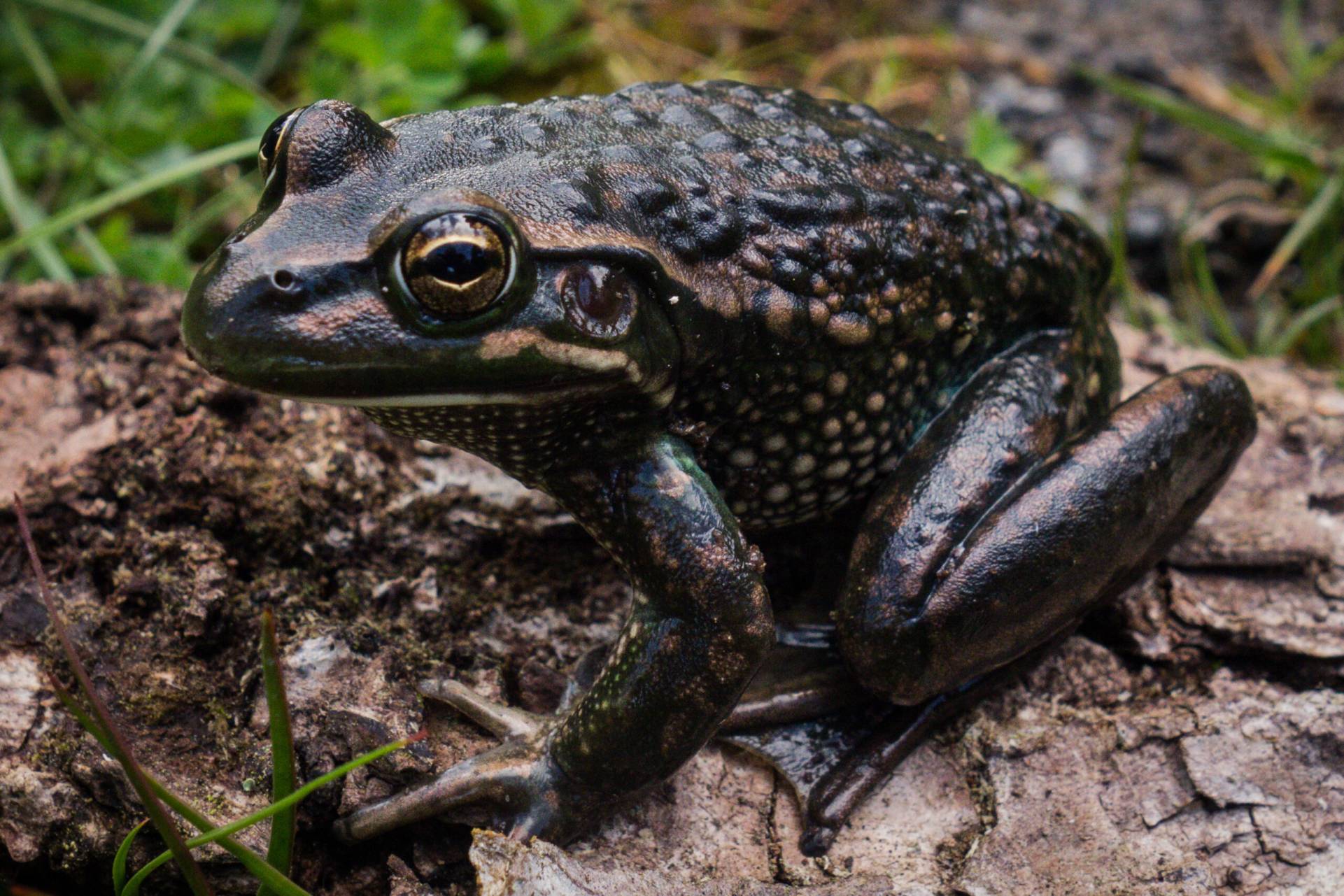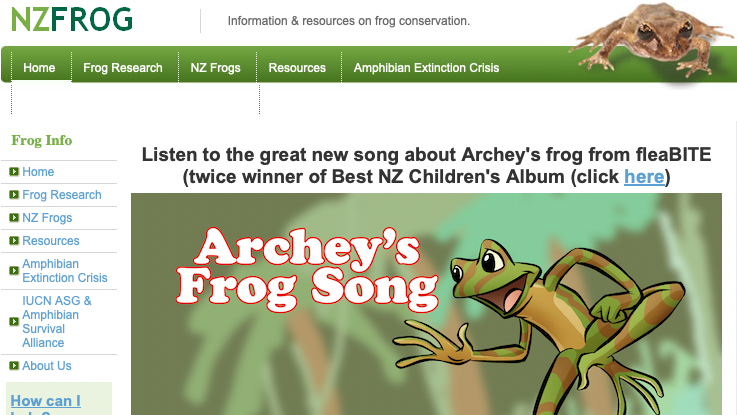Welcome to the new NZFrogs website
Originally launched in 2007, the NZFrogs website aimed to provide information and resources, supporting research awareness and conservation for New Zealand’s native frogs. NZFrogs became a charity in 2023 which was accompanied with a website refresh. The new website continues to provide information and resources. We have reinstated frog of the week on X (twitter) and Instagram which is a continuation of the @AmphibianPhil frog of the week (#FrogOTW #NZFrogs). The NZFrogs team is very excited to embark on this journey as a charity and we hope you enjoy our refreshed website.
Have you seen a frog?
Report your sighting with photo here or on iNaturalist NZ
News
NZFrogs is now on instagram click here to check out what we’ve posted so far
As the weather starts to cool down in New Zealand you may come across some darker coloured frogs as they start becoming less active! Check out how dark this Green and Golden Bell frog is.
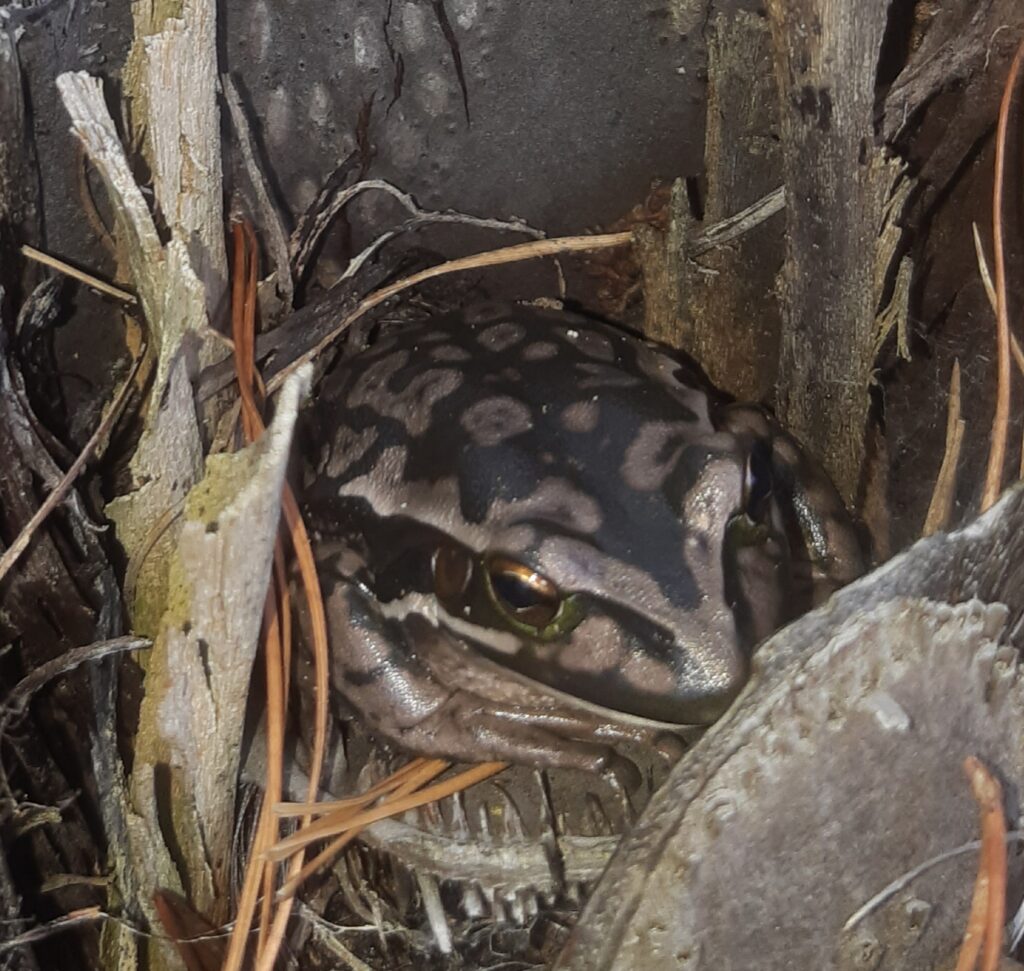
Native Frogs
Our native frogs, in the genus Leiopelma, are some of the most unique in the world, having diverged from all other frogs 200 million years ago. Here you can learn more about Aotearoa New Zealand’s three living and six extinct native frog species.
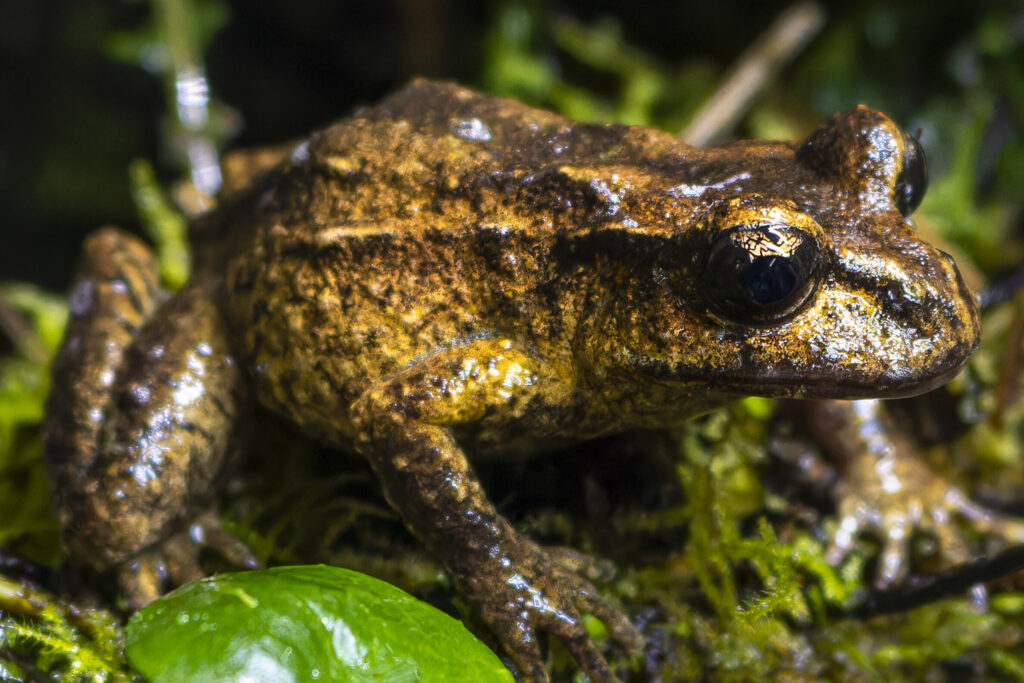
Image by ©Oscar Thomas
Introduced Frogs
At least eight species of frog have been imported to New Zealand, but only three naturalised, to establish wild populations in New Zealand. Here you can learn more about the Australian frogs along with the three newt species.
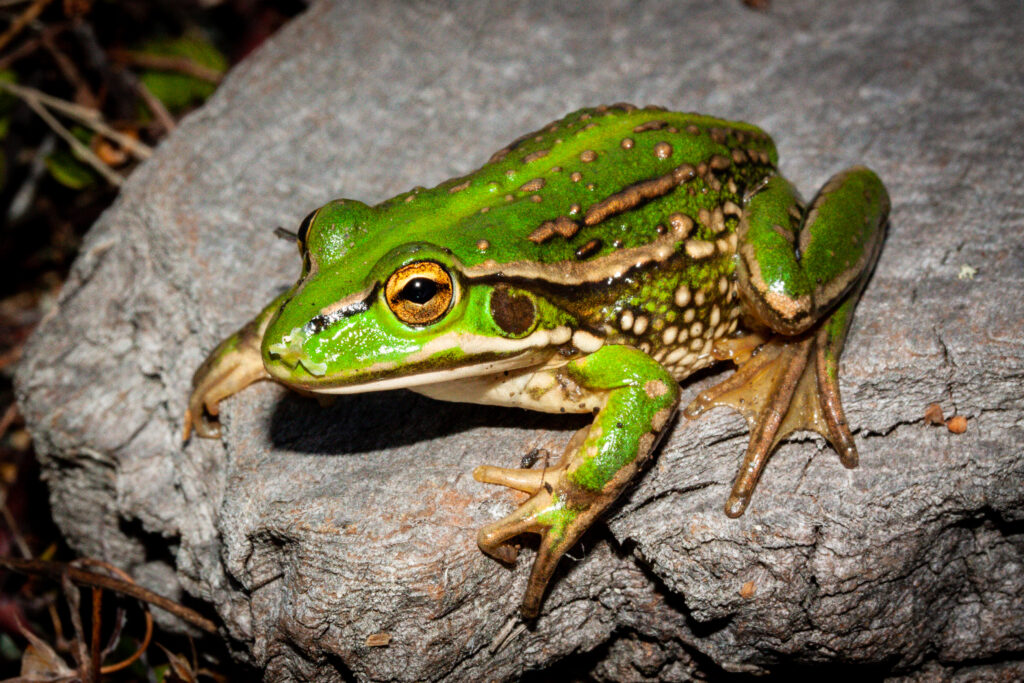
Image by ©Carey Knox
Conservation
All New Zealand native frogs are at risk or declining. Here you can learn about the awesome mahi going on in an effort to protect these frogs.
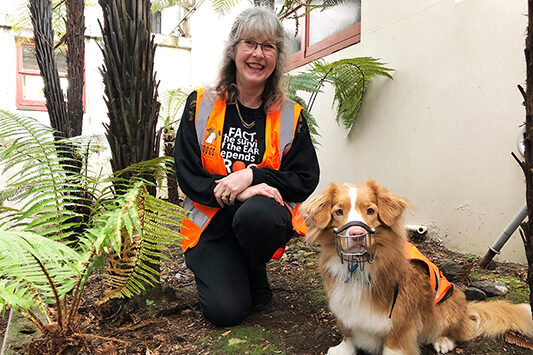
Image supplied by UoO
Frog Research
There are many people involved in the conservation, management and research of New Zealand native frogs which you can learn about here
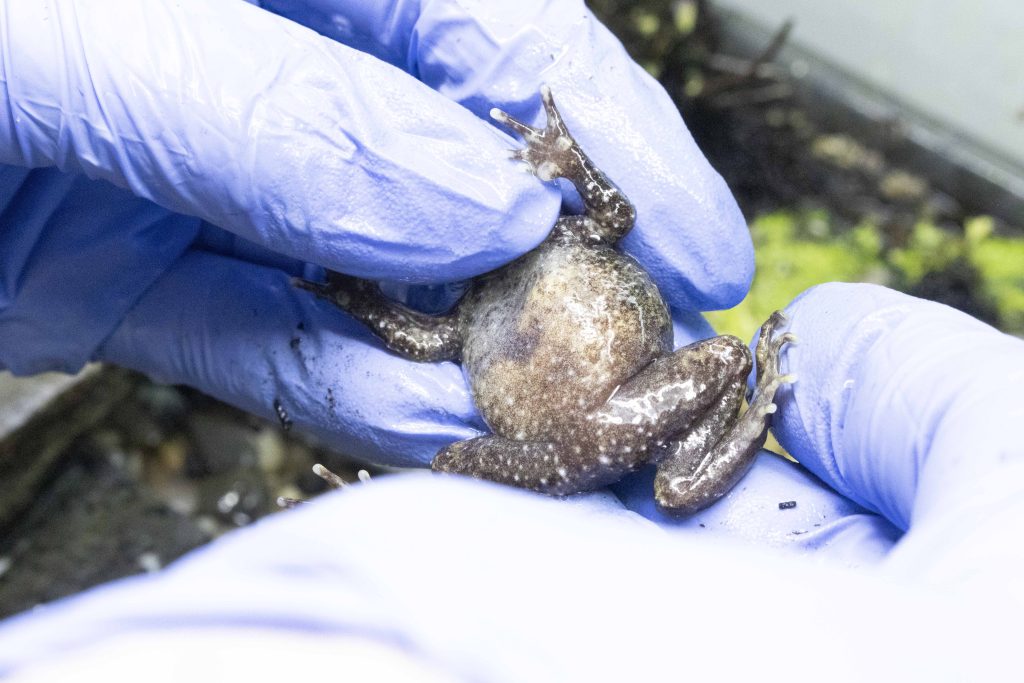
Image by ©Oscar Thomas
Resources
Here you will find fun and informative resources on frogs. Perfect for use by teachers in the classroom or for the enjoyment of up and coming herpetologists at home.
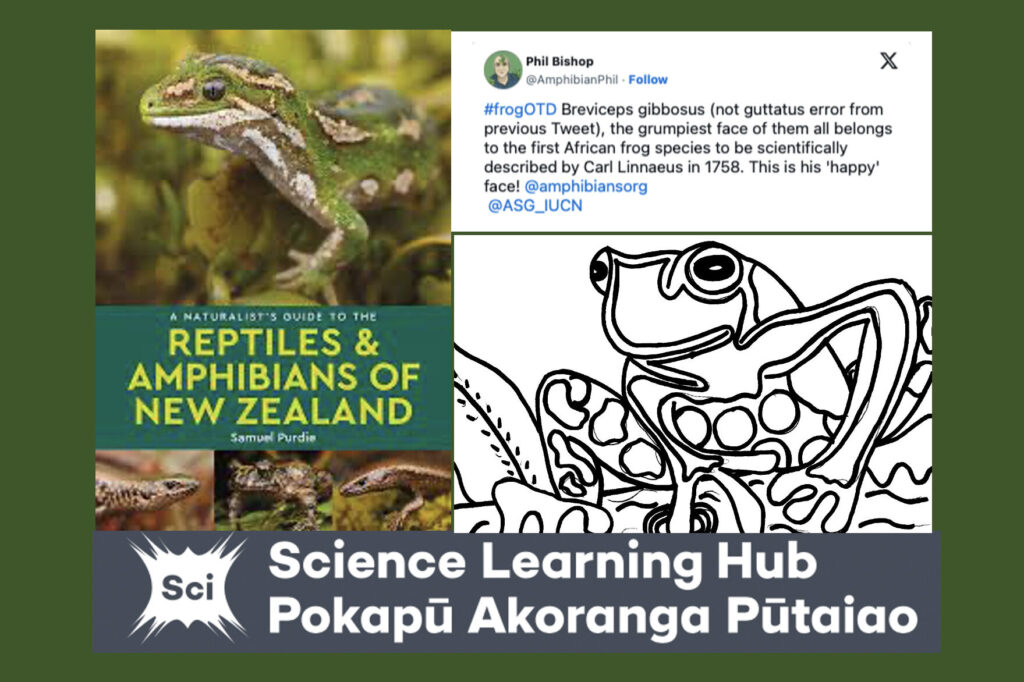
Donations and T-shirts
Here you can donate towards NZFrogs not-for-profit purpose. The link to the iconic NZFrogs t-shirt will be available for purchase very soon.

Image by Debbie Bishop
Herpetology: The study of amphibians and reptiles
Herpetology (from the Greek herpeton, meaning “crawling things”) is the name given to the study of amphibians and reptiles. A herpetologist is somebody who studies amphibians and/or reptiles.
Reptiles and amphibians are ectothermic (getting their body heat from the external environment). Except for a few other similarities including the structure of the heart, reptiles and amphibians differ markedly. Amphibians have a moist, smooth skin that is permeable to water while reptiles are covered in a waterproof dry scaly skin. The eggs of amphibians lack a waterproof shell and are mostly laid in water or in moist soil but, the reptilian egg has a thick, hard or leathery shell that holds moisture in, enabling the young to develop within it even on dry land.
Amphibians are divided into three distinct orders: Anura – frogs and toads, Urodela – salamanders and newts and, Gymnophiona – caecilians. Only members of the Anura (frogs) occur naturally in New Zealand. However, Urodela (newt) are commonly kept as pets. Unfortunately some newts were illegally introduced to the wild. Wild newts in New Zealand are a pest which MPI and the Department of Conservation are trying to eradicate due to their threat to the native wildlife including frogs.
Reptiles are divided into four orders (groups): Squamata – lizards and snakes, Rhynchocephalia – tuatara, Crocodilia – crocodiles and, Testudines – turtles.
Worldwide, frog populations are continuing to decline despite the best efforts by scientists and conservationists in more than 30 countries. 41% of all amphibians are threatened with extinction. The main cause of amphibian decline has often been attributed to Batrachochytrium dendrobatidis (chytrid fungus) yet, pinpointing the causes of the global amphibian decline is difficult. This lethal pandemic in frog populations around the globe is not the sole driver of extinctions; Habitat destruction and fragmentation are known to severely affect frogs globally, including in New Zealand. Recent research headlining the scientific journal “Nature” indicates climate change has also emerged as a major threat to amphibians.
We are finding new amphibian species everyday. The number of amphibian species in the world on the 17 January 2008 was 6,289 and has since reached 8,653 amphibian species in June, 2023.
